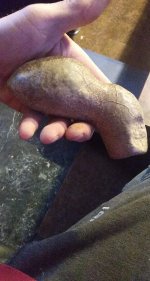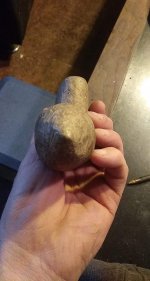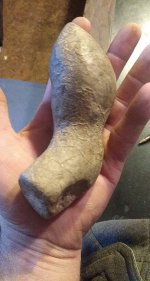Sniffy
Bronze Member
- Mar 27, 2009
- 2,043
- 95
- 🥇 Banner finds
- 1
- Detector(s) used
- Prizm III Teknetics T2
- Primary Interest:
- All Treasure Hunting
Hello. My friend in Hocking county Ohio found this 25 years ago. IN This particular area there has been a great number of flint points and tools found in the creek banks and surrounding fields. It is known by local historians that the Adena lived in this area and I was curious if anyone knew what this piece was. ANY help would be greatly appreciated.





